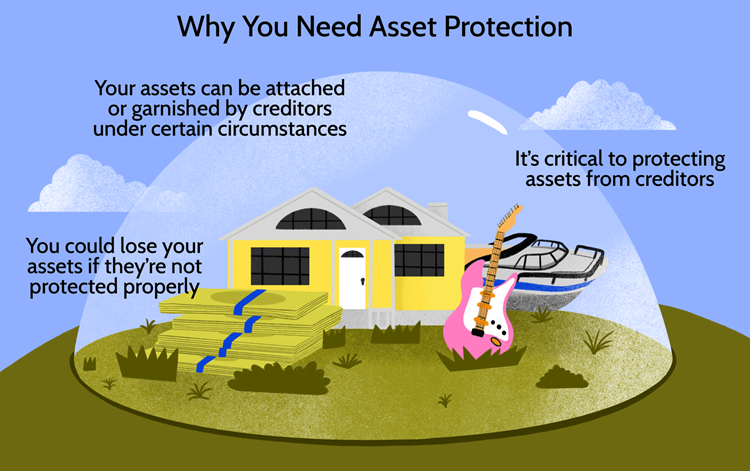
Understanding Property Insurance in Canada
Property insurance in Canada covers various types of assets, including residential homes, rental properties, and commercial establishments. Policies typically provide financial protection against damages caused by fire, theft, natural disasters, and liability claims. Here’s an overview of common types of property insurance:
1. Homeowners Insurance: Covers the structure of your home, personal belongings, and liability for accidents on your property.
2. Tenant Insurance (Renters Insurance): Protects renters’ personal belongings and provides liability coverage.
3. Condo Insurance: Covers personal property and unit upgrades, while the condo corporation’s insurance typically covers shared spaces.
4. Commercial Property Insurance: Protects businesses and commercial properties against damages and liability claims.
Federal and Provincial Oversight
In Canada, insurance is regulated at the provincial and territorial levels, with federal oversight ensuring solvency and stability within the industry. This dual regulatory system ensures that consumers are protected while allowing insurers to operate effectively.
Provincial Regulations
Each province and territory has an insurance regulatory body responsible for overseeing insurers, addressing consumer complaints, and enforcing compliance with laws. For example:
- Ontario: Regulated by the Financial Services Regulatory Authority of Ontario (FSRA).
- British Columbia: Governed by the British Columbia Financial Services Authority (BCFSA).
- Quebec: Overseen by the Autorité des marchés financiers (AMF).
Provincial laws dictate policy terms, coverage requirements, and claims processes, making it essential for property owners to familiarize themselves with local regulations.
Federal Influence
At the federal level, the Office of the Superintendent of Financial Institutions (OSFI) oversees the solvency of insurance companies. OSFI ensures that insurers maintain sufficient reserves to pay claims, protecting policyholders’ interests.
Key Property Insurance Laws and Guidelines
1. Standard Policy Requirements
Canadian property insurance policies must adhere to certain standards to ensure clarity and fairness. These include:
- Plain Language Policies: Insurers are required to provide policies in clear, understandable language.
- Mandatory Coverage Inclusions: Policies must cover basic risks such as fire and theft, though additional coverage may vary.
- Cancellation and Non-Renewal Rules: Insurers must provide written notice before canceling or non-renewing a policy, with specific timeframes varying by province.
2. Anti-Discrimination Laws
Under Canadian law, insurers cannot discriminate against policyholders based on factors like race, religion, or marital status. However, premiums may be influenced by factors such as location, claims history, and property condition.
3. Flood and Natural Disaster Coverage
In recent years, flooding has become a significant concern for Canadian property owners. While standard policies typically exclude flood damage, many insurers now offer optional overland flood coverage. Earthquake insurance is also available as an add-on, especially in high-risk areas like British Columbia.
4. Replacement Cost vs. Actual Cash Value
Property insurance laws in Canada allow policyholders to choose between:
- Replacement Cost: Covers the cost of repairing or replacing damaged property without accounting for depreciation.
- Actual Cash Value: Compensates for the property’s value at the time of loss, factoring in depreciation.
Policyholders should understand the implications of each option when selecting coverage.
Common Legal Issues in Property Insurance
Despite the robust regulatory framework, disputes can arise between policyholders and insurers. Here are some common legal issues:
1. Denied Claims
Claims may be denied for reasons such as insufficient documentation, misrepresentation, or failure to meet policy conditions. Policyholders have the right to appeal denied claims and seek resolution through their province’s insurance regulator or legal channels.
2. Underinsurance
Underinsurance occurs when a property is insured for less than its replacement value. This can lead to financial strain in the event of significant damage. Regularly reviewing and updating policies helps avoid this issue.
3. Bad Faith Practices
Insurers are legally obligated to act in good faith when processing claims. Delayed payments, undervaluing claims, or unreasonable denials may constitute bad faith. Policyholders can file complaints or pursue legal action if they suspect such practices.
Tips for Property Owners and Investors in Canada
Navigating property insurance laws in Canada requires diligence and proactive management. Here are some practical tips:
1. Assess Your Coverage Needs
Evaluate your property’s unique risks and ensure your policy provides adequate coverage. Consider additional endorsements for risks like flooding or earthquakes if applicable.
2. Choose Reputable Insurers
Work with established insurance companies with strong financial ratings and positive customer reviews. This reduces the risk of disputes and ensures reliable claims processing.
3. Understand Your Policy
Carefully review your policy’s terms, including exclusions and deductibles. Seek clarification from your insurer or broker if needed.
4. Document Your Property
Maintain an up-to-date inventory of your belongings, including photos and receipts. This documentation simplifies the claims process and ensures accurate compensation.
5. Stay Informed About Changes of insurance laws
Property insurance laws and market conditions can change over time. Stay informed about updates to regulations or emerging risks that may affect your coverage.
Emerging Trends in Property Insurance
The property insurance landscape in Canada is evolving due to factors like climate change, technological advancements, and shifting consumer preferences. Here are some notable trends:
1. Climate Change and Risk Assessment
Increasing instances of extreme weather events are prompting insurers to reassess risk models and pricing. Policyholders in high-risk areas may face higher premiums or limited coverage options.
2. InsurTech Innovations
Technological advancements, such as AI-powered risk assessments and blockchain for claims management, are transforming the insurance industry. These tools enhance efficiency and transparency.
3. Personalized Coverage Options
Consumers are seeking more flexible and personalized insurance solutions. Insurers are responding with customizable policies and usage-based coverage tailored to individual needs.
Property insurance laws in Canada are designed to protect policyholders while ensuring a stable and fair marketplace. By understanding these laws, property owners and investors can make informed decisions about their coverage, minimizing risks and safeguarding their assets. Whether you own a home, manage rental properties, or operate a business, staying informed and proactive is key to navigating the complexities of property insurance in Canada.

